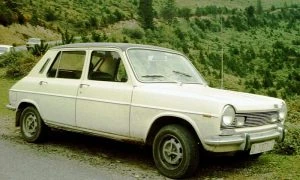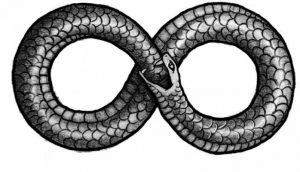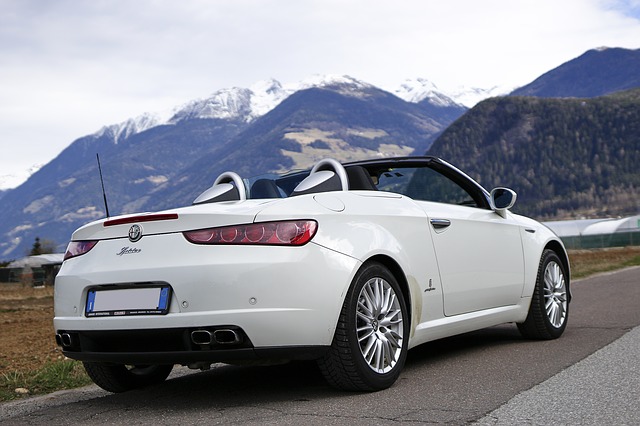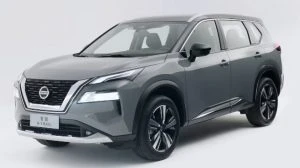Makes and Models
Simca: A Forgotten Marque?
The first car I ever owned was a Simca. Before I owned it, I had never heard of the marque, and my dad, who had helped me find this set of wheels to get me to a summer job, described it as the French equivalent of a VW Beetle or a Mini. After that summer of using the Simca to get to my holiday job, I ended up selling it and using the money to buy a fridge, which I needed for my new flat. I have never heard or seen any other Simcas since then. Needless to say, there is that part of me that, now that I have left my student days well behind me and am probably officially middle-aged, is kicking myself for selling it (the fridge is also long gone). Especially as now, it would be worth a lot more than a refrigerator, given that would have been a fairly rare classic car. The same could probably be said by most of us about our student cars.
I cannot remember the model of Simca that I owned. However, a quick crawl through the range of images online suggests that it was probably a 1000 or 1100. Given that the engine was at the front (I remember almost ritually checking up the fluids every week on a Thursday, opening the bonnet to do so), I can therefore conclude that it was a 1100, as the 1000 had a rear engine, like a VW Beetle.

Simca 1100 – a wee trip down memory lane for me.
I have noticed blank looks similar to mine when I start talking about my first car. “Who makes that?” is quite a common question. As it would be nice to have a nice article to direct these dinner party guests to, I thought I’d put together a bit about Simca, what they made and what happened to them.
My father had called the Simca the French equivalent of the Beetle or Mini. He would have done better to say that Simca was the equivalent of the Fiat Bambina or Fiat 500. This is because the company, originally known as “Société Industrielle de Mécanique et Carrosserie Automobile” (that’s French for “Mechanical and Automotive Body Manufacturing Company”) was founded by Fiat in 1934 so they could outsource the production of their 508 and 518 models. Then World War 2 happened and Simca nearly went under, especially because of its Italian roots, and the Italians (under Mussolini’s Fascists) had been rather pally with the Nazis who had occupied France during the war. However, the company won a contract to repair US Army Jeeps, which put them on a sound financial footing.
For the next two or three decades, Simca grew slowly, although they were overshadowed by the better-known French marques, Renault, Citroen and Peugeot, especially Renault. However, it was successful in its home country, with the 1100 being one of the most popular cars in France by the late 1970s. Simcas were manufactured in a number of countries, including Australia, which is probably where the one I owned was made. The company also managed to take over the Talbot-Lago brand, with several Simca models also being sold with Talbot badging.
However, Simca was itself taken over, slowly and surely, by Chrysler. The American company bought a sizeable share of Simca in the late 1950s, although the company was still mostly a subsidiary of Fiat. Chrysler gradually edged Fiat out and took over the majority of shares in the 1960s. Finally, by the early 1970s, Chrysler took the company over completely and Simca’s name was changed to Chrysler France. The old Simca badge was phased out, with the last official Simca being made in 1973, which tells me that my car was older than me. After that, the cars made in Simca’s factories all had the Chrysler badge, including the Alpine and the Horizon.
I doubt I will try hunting down another example of my old Simca (presumably) 1100. If I were to look for a classic car, it would probably be something else, even though I thoroughly enjoyed driving my Simca, despite the lack of power steering and the fact that the speedo was in mile per hour, meaning that I had to do plenty of mental arithmetic during my daily commute to ensure I kept to the speed limit. However, given that Chrysler Europe was itself taken over by the Peugeot group in the late 1970s, I started speculated what the closest modern-day equivalent would be. I had a look at the latest offerings available from Fiat-Chrysler Australia (an appropriate blend of names, given Simca’s history) and decided that the closest thing was… the Fiat 500. Which is where Simca started, ouroboros fashion.

The Ouroboros – ending where it begins. Wouldn’t it make a great automotive logo?
Your Guide to Car Body Types – Part 2
If you’re in the market for a new car, you’ve probably been thorough with your research as you narrow down your selection. But if you’re still sitting on the fence, identifying the vehicle you need can sometimes be difficult if you don’t understand how that is influenced by the body type of each car.
Not only can the body of a car have a bearing on overall ride comfort and performance, but it can influence your ongoing ownership costs. Here, in part 2 of this guide, we take a look at the various car body types to enable you to frame your buying decision.
SUV
Now the first choice for the majority of Australian new car buyers, SUVs – or sports utility vehicles – are defined by their imposing, boxy appearance. They are bigger and more durable than ordinary passenger cars, which also means they require more power under the bonnet. At the same time they are also a standout for cargo and towing capacity.
An option well suited to large families, many SUVs are just as adept off-road as they are on bitumen, although this varies from model to model, and also depends on whether they are fitted with a 4×2 or 4×4 setup. Their running costs will generally be more on account of their higher fuel requirements, plus the wear and tear arising from their overall weight and size.

Crossover
At first glance crossovers may look rather similar to SUVs, and that’s because their design is shared. Under their external façade however, the mechanical chassis of each offers a distinct difference.
Crossovers sport a unibody construction, often sharing the same platform as that found in passenger vehicles, making them more suited for bitumen and not so much off-road. This differs to SUVs, which have a truck-like platform where the body sits on the frame. From an ergonomics perspective, crossovers are often praised for their leg room and higher passenger positioning.

Ute
Seen at construction sites all around the country, utes feature an enclosed cabin, with open cargo tray in the rear. The cabin may have a single row of seating, or a second row as well, while the tray has a tailgate and low sides for ease of access to transport goods. More often than not utes will use the same chassis as that in vans, or even serve as the platform for SUVs. This means they have a robust and durable frame for coping with high workloads.

Multipurpose vehicle
Multipurpose vehicles – or MPV for short – are a form of van, albeit with flexibility for carrying either passengers, or cargo. From a passenger perspective, they can carry as many as 8 or 9 passengers, while folding seats can optimise the same space to transport goods instead. Because it stands more upright than SUVs, their roof clearance is greater and provides an enlarged sense of space inside. MPVs are also more suited for children and elderly passengers given their ease of access and seating ergonomics, however their handling sometimes falls short of comparable cars in other segments.

Van
Vans share many of the practicalities that MPVs do, albeit they are tailored for commercial purposes and thus have less flexibility and amenity when it comes to moving people around. Boasting sizeable storage and payload capacity, the large size of vans typically means they have a large turning circle and are restricted in terms of manoeuvrability and performance. Their distinctive barn-style rear doors and sliding side doors offer great access, which does sometimes make them a convenient option to transport crew.

Your Guide to Car Body Types – Part 1
If you’re in the market for a new car, you’ve probably been thorough with your research as you narrow down your selection. But if you’re still sitting on the fence, identifying the vehicle you need can sometimes be difficult if you don’t understand how that is influenced by the body type of each car.
Not only can the body of a car have a bearing on overall ride comfort and performance, but it can influence your ongoing ownership costs. Here, in part 1 of this guide, we take a look at the various car body types to enable you to frame your buying decision.
Sedan
Once the most popular vehicle category, sedans have been a mainstay on our roads for as long as we have depended on cars. Made recognisable by their three zones – one dedicated to passengers, one for the engine, and the other assigned to luggage – they feature four doors and usually offer supreme access.
Sedans may further be categorised into sub-segments. At the upper end of the price range you will run into limousine style sedans, with an extended wheel base and further compartmentalisation to increase amenity and ride comfort. Expect ongoing costs to tally up quickly!
You may also see compact and sub-compact sedans, which generally sport a shorter wheel base and may have less rear leg room or space in the luggage hold. Fastbacks have a distinctive design where the rear of the body slopes down towards the bumper, occupying some rear head room.

Coupe
Similar to the sedan, except coupes will generally come with two doors and place a higher priority on style over added space for passengers and cargo. As such, most coupes are tailored towards just two occupants.
Compared with convertibles, coupes have a hard top roof, which slopes to the rear. In recent times the introduction of the Grand Tourer sub-segment and four-door coupes have provided added practicality, as well as more space and luxury touches.

Convertible
Also going by the name of cabriolet or roadsters, convertibles have one practical advantage over coupes. They come with either a retractable soft or hard top roof, allowing occupants to embrace the elements. Beyond that however, they share the same athletic design as coupes, with both generally known for their nimble and sporty handling attributes.

Wagon
Station wagons are characterised by a long, drawn-out body that optimises rear space for additional luggage and head room. As such, they typically make great choices for families and/or adventurers, allowing you to transport all you’ll need for a weekend away. Another typical feature is the visibility, light and sense of airiness within the cabin that comes from the rear windows extending all the way to the boot.

Hatch
Hatchbacks and liftbacks are known for their rear, hatch-style door that opens upwards. They utilise a two-box design, where the engine is zoned in one compartment, while the luggage hold and cabin are amalgamated into the other compartment. While sometimes short on power and internal space, these small vehicles weigh far less than most other vehicles on the market, giving them a zippy feel and making them a great option for inner city driving and parking.

City car
These pint-sized units are built almost specifically for inner city navigation and manoeuvring. They are smaller than hatchbacks by some margin, with the wheels fitted right at the edges of the chassis to maximise turning proficiency. They make for simple cars to park, although don’t expect much in the way of rear leg room nor space to store your cargo.

Spot the Difference?

 Did you know that the Renault Koleos is very much a Nissan X-Trail? Were you also aware that the current BMW 7-Series is the platform for the new Rolls-Royce Dawn? These days car manufacturers are sharing a lot of the components that go into making a new vehicle. A lot of the electronic systems and computer chips are shared between makes and models, even engines and an entire body platform. As the costs of designing and building a complex new car rise, by getting together and pooling money, skills, assets, and sharing the costs of the new build, these are definitely clever ways for manufacturers to reduce their overheads, and the overall cost of designing and building a new vehicle.
Did you know that the Renault Koleos is very much a Nissan X-Trail? Were you also aware that the current BMW 7-Series is the platform for the new Rolls-Royce Dawn? These days car manufacturers are sharing a lot of the components that go into making a new vehicle. A lot of the electronic systems and computer chips are shared between makes and models, even engines and an entire body platform. As the costs of designing and building a complex new car rise, by getting together and pooling money, skills, assets, and sharing the costs of the new build, these are definitely clever ways for manufacturers to reduce their overheads, and the overall cost of designing and building a new vehicle.
Platform sharing between manufacturers and between models is, perhaps, more common than you may have thought; and particularly now more than ever. In some cases, the similarities between a particular car, truck, or ute and its platform-twin are obvious. However, at other times it’s not so easy to detect the resemblance.
A car’s platform is the base (including body shell, floor, and even some of the chassis and engine parts) on which it is built. Not only can these components be common to more than one manufacturer, but they can also be shared between models in a manufacturer’s line-up. The initial platform design and its production or engineering works can be shared across a number of different models. Kia and Hyundai are some of the best brands at doing this sort of thing, and so too is VW.
Sharing componentry between different manufacturers/brands has to be built on an existing good business relationship. So, when two or more automotive manufacturers with a good relationship have shared the same desire to save money, they can operate together and agree to share development costs and also essentially sell the same cars but under different badges. Renault and Nissan are great examples of this. Some of the most talked about illustrations of this occurring recently will have been the Toyota GT86 and the Subaru BRZ, which are essentially the same cars tarted up slightly differently. Also, the Toyota Corolla station wagon and the Suzuki Swace (a less known model here in Australia) are exactly the same car. Another illustration would be the awesome new Toyota Supra and BMW Z4 cars. Also, Volvo has platformed shared quite frequently over the years. The Global C-car Platform from Ford saw the Volvo S40 and V40 share much with the Ford Focus and Mazda 3. Well known Hyundai and Kia have utilized several duplications of platforms for their small automobile line-up since 1997.
Having a shared engineering platform, where manufacturers build a basic foundation that can be used across many of its own models is an advantage. The Volkswagen Group (VW), and the brands it owns, (Audi, Bentley, Lamborghini, Porsche, Seat and Skoda) are masters of this craft. VW has a common practice where they will build a smaller number of platforms, but the benefits come when they will then re-purpose these platforms across their own different brands. When VW designed and built the MQB (Modularer Querbaukasten) platform, it was shared across the Audi A3, Skoda Octavia, and Seat Leon. Also, one of its SUV platforms is shared and utilized by the Audi Q7 and Q8, the Bentley Bentayga, the Lamborghini Urus, and Porsche’s Cayenne.
BMW’s 7-Series is the platform for the immensely luxurious and expensive Rolls Royce Dawn. The new 7-Series is luxurious and sleek in its own right, but it is also much, much cheaper to buy – comparatively.
Some other new vehicles that are currently sharing platforms:
Cadillac CTS and Chevrolet Camaro
VW Polo and Skoda Scala
Mercedes Benz GLE and Jeep Grand Cherokee
Renault Koleos and Nissan X-Trail
Fiat 500 X and Jeep Renegade